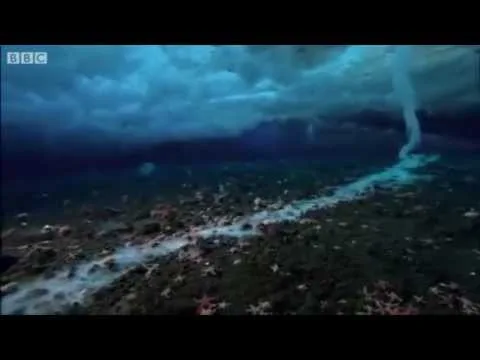Rare phenomenon captured on film for the first time sends a shiver down spines
A spine-chilling video reveals the eerie dance of an otherworldly phenomenon known as the ‘ice finger of death,’ a rare occurrence that strikes fear into the hearts of Arctic Ocean dwellers.
The mesmerizing footage, featured in BBC Earth Unplugged, captures the moment a formidable spike of ice descends to the ocean floor, leaving an icy trail of destruction in its wake.
Contrary to the perception of Arctic waters as desolate, lifeless expanses, the video showcases the thriving marine ecosystem beneath the ice, where coral reefs and remarkable biodiversity, including the long-lived Greenland Shark, flourish.
However, for less mobile inhabitants such as starfish and anemones, a silent terror lurks in the form of the ‘brinicle’—a menacing column of ice that spells doom for those unfortunate enough to encounter it.
Far more than a chilling treat, a brinicle forms within sea ice, where the salt content creates channels of highly salty brine. Bursting forth into the seawater, this cold brine descends to the ocean floor, freezing everything in its path.
The chilling spectacle, known since the 1960s but only captured in full on film in 2011 during the BBC’s Blue Planet II series, unfolds as the icy tendrils of the brinicle spread out on the seafloor, trapping unsuspecting creatures in its frosty grip.
While the swift escape of fish and shrimp is generally assured, echinoderms like starfish or sea urchins face a frosty demise, unable to outrun the creeping brinicle. Growing at a rate of several meters per day, these icy fingers create what scientists call ‘anchor ice,’ forming sheets of ice on the seafloor.
Despite our understanding of the brinicle’s formation process, this chilling phenomenon continues to hold mysteries yet to be unraveled, as highlighted in a study published in the Journal of Glaciology.
As we unveil the secrets of the ‘ice finger of death,’ the Arctic Ocean’s icy depths remind us that nature’s wonders can be both breathtaking and bone-chilling.
